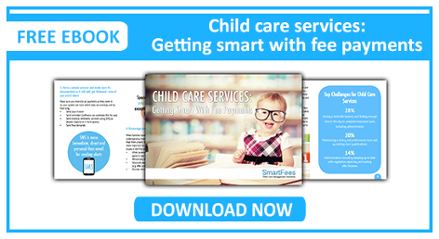As a director of a child care service you’re busy dealing with day-to-day tasks and simply keeping the wheels turning. There just aren't enough hours in the day to do the stuff that you know you should do, never mind the stuff that you would like to do. Here are steps you can take to clear the decks and make room for those important tasks that are currently getting crowded out or just a bit of time out.

"Clearing the decks sounds like a great idea but how do I go about it?" I hear you say. In this blog I'll outline the steps you can take in:
- Defining which tasks need to be streamlined
- Deciding which tasks are really appropriate to delegate
- How to go about implementing change
- How and why to measure the effectiveness of the change
In follow up blogs I'll go through each of these steps in more detail.
In our 2015 child care sector survey almost 60% of child care directors stated that they were very concerned by the time taken up on administrative tasks and their impact on work life balance. Hopefully you’re comforted in the fact that you are not alone in dealing with these issues.
The hardest part is making a change. One of the worst things anyone can say in business is “We’ve always done it that way”. It’s important to remember that what may have worked in the past may not necessarily work into the future. If you want to free up more time in your day to tackle other challenges, you must explore what options are out there to help you streamline those time consuming tasks.
And so we begin our journey. A word of advice, as you read these steps if any ideas come to you, write them down. Rough notes are way better than no notes. A tiny bit of extra effort at the start will make your life much easier.
The key steps include:
1. Clarify the problems
Of course businesses rarely have just one problem but be specific. List out all of your problems and then prioritise them using these questions to help rank which ones to focus on first. Think about what is it about the problem that's causing the most pain.
-
Is it the time wasted?
-
The aggravation with staff or parents?
-
Money that could be spent on other things?
-
Or the mountain of paper you have to jump over to get to your desk? (That's not made up, it really happens).
The more specific you can be about the problem the easier it will be to find the right solution for you.
2. Measure the current situation
Get some real data. Having facts to work with will help you make choices about which things are worth fixing and realistically how much you could gain from fixing it.
3. Identify the benefit
How would things be different if this was fixed? Who would be better off and how? You, your staff, the children you care for, their parents & guardians, the management committee, others?
You may not have a benefit for everyone all the time but it helps to think about each group in turn. The more clear you can be in your own mind about what you want to achieve the easier it will be to achieve it.
4. Coming up with options, picking winners
It doesn’t all have to come from you. Do you have a variety of skills and experience in your team or people around you to ask for suggestions and advice?
Perhaps you know or can find out how others are dealing with similar issues. Which options have others tried and which could give you the biggest benefit for the least effort?
5. Getting organised, making it happen
So you know what you want to do, why you want to do it and just as importantly, what you expect to get from it. So what are the actual activities involved and who is going to do what? And who is going to be affected? Even slightly? A simple task list with who is responsible for carrying out the task and when its due by will help you stay on top of things and make sure nothing gets missed out.
6. Communicating with stakeholders
Even large commercial organisations who should know better fall into this trap but we won't.
It’s important to bring people along with any change. Of course they will want to know what's changing but they also want to know how that will affect them. Expect different people to react differently.
Some will welcome change and want to jump on board, some will go along for the ride and some will just want to avoid any change for as long as possible until there is absolutely no choice (and still they wont want to change).
Its tempting to talk only to the first group, take the second group for granted and avoid the third, yes? But no. We will give you some handy tips on getting the best out of each group.
7. Measuring the impact
Ok great – you have done the tricky bit. The world has changed and it’s a brand new day. Time to reap the benefits and bask in the satisfaction of a job well done. But before we head pool-side lets take just a little time out to re-gather the facts from way back in step 2. Just so we know what we are celebrating exactly.
8. Dealing with what is left
So maybe the change didn't turn out exactly the way you expected. That doesn’t make it a disaster. And because you have been following these steps you caught any problems early. Early enough to deal with things before people start getting ticked off by those “if only I'd known” teething issues.
We will give you some tips to take the emotion out of dealing with the aftermath of change and distinguish between what is fix-worthy and what is normal grumblings about change.
In the following blogs we will go through each of these in more detail. We will aim to make each blog as self contained as possible so if you need to zero in on a particular issue or step you can cut straight to the chase but this really is intended as a series to take you all the way through from go to whoa.
To make sure you don’t miss any of the series why not subscribe to out blog, SmartReads?



